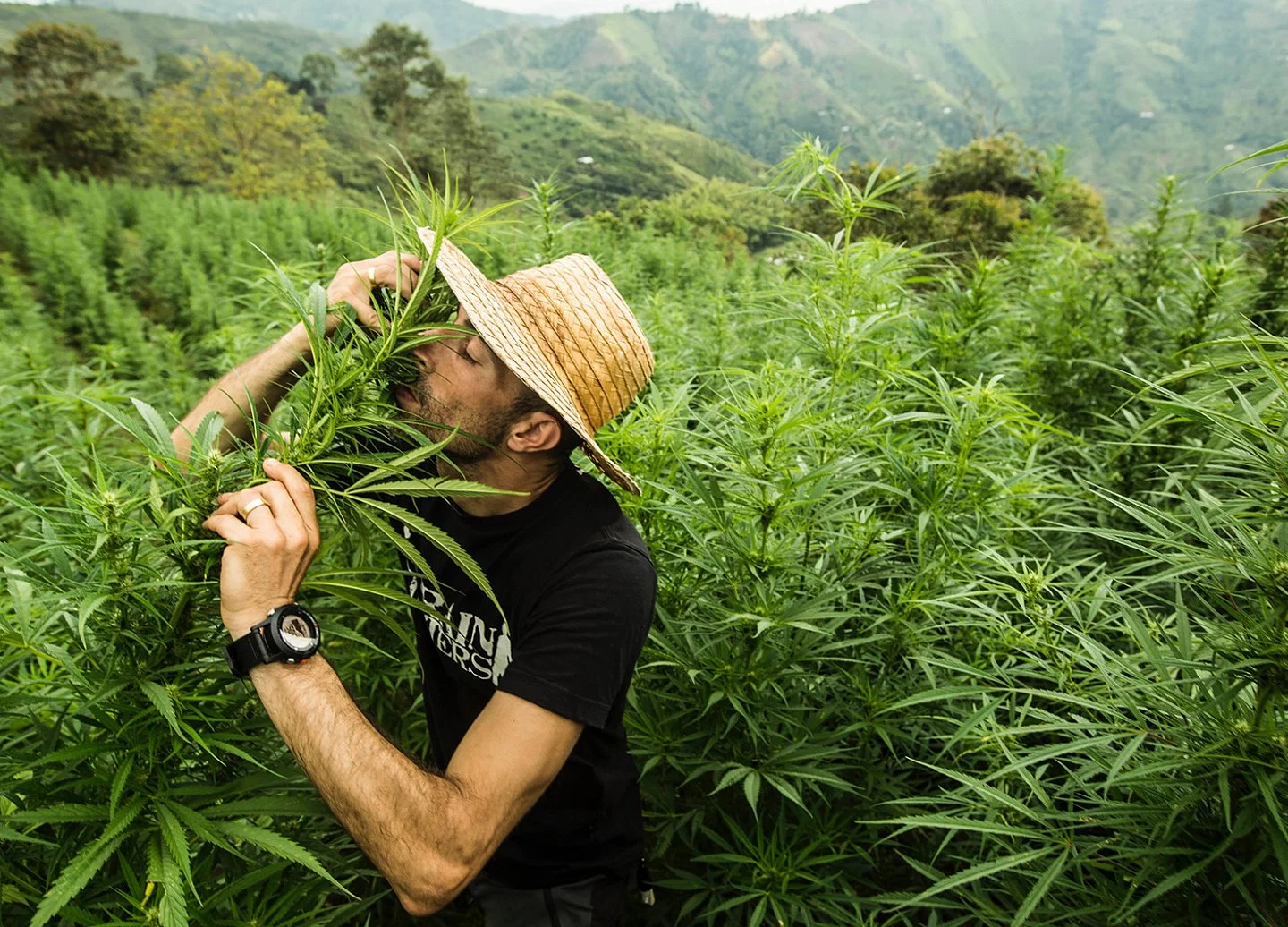
In the introduction to our exploration of the historical uses of cannabis, we embark on a journey through the annals of time to uncover the plant’s profound significance. Cannabis, a botanical marvel known by various appellations such as weed, ganja, or marijuana, holds a storied past spanning millennia. Its multifaceted utility in medicinal, spiritual, and industrial domains has indelibly shaped cultures across the globe, leaving an enduring imprint in ancient texts, archaeological relics, and cultural practices. Transitioning to the Canadian milieu, we underscore the nation’s distinctive relationship with cannabis, tracing back through centuries of Indigenous utilization and intercultural exchange.
Indigenous communities across Canada have long integrated cannabis into their traditional practices, harnessing its medicinal properties for holistic healing and spiritual ceremonies. From the Pacific Northwest to the Great Plains, cannabis served as a sacred herb, revered for its ability to foster connection with the natural world and facilitate communal bonding. As European settlers arrived on Canadian shores, they encountered Indigenous cultures deeply intertwined with cannabis, laying the groundwork for cross-cultural exchange and adaptation.
Against this backdrop of Indigenous knowledge and colonial encounters, cannabis found its place in early Canadian society, emerging as a staple crop for hemp production and medicinal remedies. From the fur trade era to Confederation, cannabis cultivation flourished, driven by the pragmatic needs of settlers and the burgeoning industrial revolution. However, as societal attitudes towards cannabis evolved, fuelled by moral panic and political agendas, the shadow of prohibition loomed large over Canada.
The early 20th century marked a pivotal juncture in Canadian history, as the Temperance movement and moral reformers campaigned fervently for the criminalization of cannabis. The ensuing era of prohibition ushered in a period of stigma and marginalization, casting cannabis into the shadows of society and erasing centuries of Indigenous wisdom and cultural practices. Yet, even amidst the darkness of prohibition, pockets of resistance persisted, as clandestine cannabis communities clandestinely cultivated and preserved their heritage.
Fast forward to the present day, and Canada stands at a crossroads of cannabis culture, grappling with the legacy of prohibition while embracing the promise of legalization. With the landmark legalization of recreational cannabis in 2018, Canada embarked on a bold experiment, charting a new course for cannabis regulation and public policy. From licensed producers to boutique dispensaries, the cannabis landscape has undergone a seismic shift, catalyzing economic growth, social change, and scientific innovation.
Our exploration of the historical uses of cannabis illuminates not only the plant’s rich tapestry but also the enduring resilience of Indigenous knowledge and cultural practices. As Canada navigates the complexities of legalization and regulation, it behooves us to reflect on the lessons of the past and envision a future where cannabis is celebrated as a source of healing, connection, and cultural heritage.

Cannabis’s roots extend deep into the annals of human history, with evidence of its cultivation dating back thousands of years in ancient civilizations like China and India. In China, archaeological discoveries trace cannabis cultivation to as early as 4000 BCE, where it was revered as one of the “five grains” alongside rice, wheat, barley, and millet. Ancient Chinese texts, such as the Pen Ts’ao Ching (The Herbal Classic of Shen Nong), document the medicinal properties of cannabis, highlighting its efficacy in treating various ailments. Similarly, in India, cannabis, known as “ganja” or “bhang,” holds a sacred place in ancient texts like the Vedas, where it is mentioned as one of the five sacred plants and associated with the god Shiva. Cannabis cultivation flourished in the Indian subcontinent, with references to its use in religious ceremonies, medicinal preparations, and even recreational consumption.
Cannabis’s association with religious and spiritual practices is deeply ingrained in the ancient rituals of cultures worldwide. In India, cannabis plays a central role in the worship of Lord Shiva, particularly during the festival of Maha Shivaratri, where devotees consume bhang-infused beverages as an offering to the deity. Cannabis’s psychoactive properties were believed to facilitate communion with the divine and induce states of heightened consciousness conducive to meditation and introspection. Similarly, in ancient China, cannabis was revered as a sacred plant with potent spiritual properties, often used by Taoist sages and Buddhist monks in their quest for enlightenment. Ritualistic cannabis consumption served as a gateway to transcendental experiences and spiritual revelations, fostering a profound connection between individuals and the cosmos.
The historical record abounds with evidence of cannabis use in ancient societies, as documented in texts, artifacts, and archaeological findings. Ancient medical texts from China, such as the Shennong Ben Cao Jing (The Divine Farmer’s Materia Medica), enumerate the therapeutic effects of cannabis for treating ailments ranging from rheumatism to malaria. In India, the Atharva Veda, one of the oldest religious texts, references cannabis as a sacred herb used in rituals and healing preparations. Archaeological excavations have unearthed cannabis residue in ancient tombs and burial sites, providing tangible evidence of its use in funerary rites and religious ceremonies. Artistic depictions of cannabis plants adorn pottery, temple walls, and religious artifacts, attesting to its cultural and spiritual significance in ancient civilizations. Collectively, these historical texts and artifacts offer a glimpse into the profound influence of cannabis on the cultural, religious, and medicinal practices of antiquity.
Cannabis holds a deep-seated significance in the traditional practices and spiritual beliefs of Indigenous peoples across the vast expanse of Canada. From the Pacific Coast to the Atlantic shores, Indigenous communities have cultivated and revered cannabis for generations, incorporating it into their cultural fabric and daily lives. Among the Haudenosaunee Confederacy in the east and the Coast Salish peoples in the west, cannabis was prized for its medicinal properties and spiritual resonance, serving as a conduit for healing and communion with the natural world. In the boreal forests of the north, the Cree and Dene Nations utilized cannabis as a versatile resource for crafting textiles, rope, and traditional medicines, fostering a harmonious relationship with the land. Across the plains and prairies, the Blackfoot and Métis peoples celebrated cannabis as a sacred plant imbued with the wisdom of their ancestors, embodying resilience, strength, and cultural continuity.
Indigenous cultivation techniques for cannabis reflect a profound understanding of the land and its rhythms, passed down through generations of stewardship and innovation. Traditional planting methods, such as companion planting and crop rotation, maximized the yield and potency of cannabis while minimizing environmental impact. Harvesting rituals were imbued with reverence and ceremony, honoring the plant’s role as a provider of sustenance and healing. Indigenous communities employed various methods of consumption, including smoking, vaporization, and oral ingestion, each imbued with cultural significance and ritualistic meaning. Cannabis was often consumed in communal settings, fostering bonds of kinship and solidarity within the community. Traditional medicines derived from cannabis were administered by healers and medicine people, drawing upon centuries of indigenous knowledge and holistic healing practices.
Cannabis occupies a central place in the spiritual and cultural traditions of Indigenous peoples, embodying a sacred connection to the land, the ancestors, and the cosmos. Ritualistic cannabis use is woven into the fabric of ceremonial gatherings, seasonal celebrations, and rites of passage, serving as a bridge between the physical and spiritual realms. Among the Haudenosaunee Confederacy, the Cannabis Planting Ceremony symbolizes renewal and reciprocity, as participants join together to sow the seeds of hope and prosperity for future generations. In the Pacific Northwest, the Coast Salish peoples honour cannabis as a gift from the Creator, invoking its healing properties in sacred rituals and ceremonies. Cannabis’s role as a sacred medicine extends beyond the individual to encompass the collective wellbeing of the community, reinforcing bonds of kinship and cultural identity. Through the lens of Indigenous culture, cannabis emerges not merely as a plant but as a living embodiment of ancestral wisdom, resilience, and reverence for the natural world.

European exploration and colonization Cannabis made its debut on North American soil through the lens of European exploration and colonization, as early voyagers and settlers brought seeds and knowledge of the plant across the Atlantic. Spanish conquistadors and Portuguese sailors, venturing into the New World in the 15th and 16th centuries, carried hemp seeds aboard their ships, recognizing the plant’s utility for fiber production and medicinal purposes. As European colonies took root along the eastern seaboard, cannabis cultivation spread alongside other staple crops, contributing to the agrarian landscape of early North America. French fur traders and British settlers introduced cannabis to Indigenous nations through trade networks and diplomatic exchanges, further entwining the plant with the cultural tapestry of the continent.
Cannabis cultivation flourished in the fertile soils of early North America, as settlers and Indigenous peoples alike recognized the plant’s versatile utility for industrial and medicinal purposes. Hemp, prized for its strong fibers and resilient stalks, emerged as a cash crop in colonial America, with Virginia and Pennsylvania leading the charge in hemp production. From rope and canvas to paper and textiles, cannabis played a vital role in sustaining the burgeoning economies of the colonies, fuelling trade and commerce across the Atlantic. Medicinal preparations derived from cannabis found favour among physicians and apothecaries, who prescribed tinctures and extracts for a myriad of ailments, ranging from pain relief to digestive disorders. Historical documents and diaries from the colonial era offer glimpses into the widespread cultivation and consumption of cannabis, underscoring its integral role in shaping early North American society.
In the early days of Canadian settlement, cannabis occupied a complex and multifaceted position within society, reflecting the diverse cultural attitudes and perceptions of the time. Among Indigenous nations, cannabis retained its sacred status as a gift from the Creator, revered for its medicinal and spiritual properties. European settlers, influenced by prevailing attitudes towards cannabis in their homelands, initially viewed the plant with a mix of curiosity and pragmatism. As cannabis cultivation spread throughout the colonies, it became enmeshed in the fabric of everyday life, utilized for everything from rope-making to pain relief. However, with the rise of temperance movements and the moral reform agenda of the 19th century, attitudes towards cannabis began to shift, as policymakers and moral crusaders increasingly framed the plant as a threat to public morality and social order. By the dawn of the 20th century, cannabis had become ensnared in the web of prohibitionist rhetoric, setting the stage for a tumultuous era of legal restriction and cultural stigmatization.
The early 20th century witnessed the emergence of cannabis prohibition in North America, spurred by a convergence of social, political, and economic factors. Influenced by the temperance movement and moral reform campaigns of the Progressive Era, policymakers began to cast cannabis as a menace to society, associating it with moral decay, crime, and degeneracy. In Canada, the enactment of the Opium and Narcotic Drug Act in 1923 marked the first federal legislation criminalizing cannabis, driven by fears of drug addiction and racial prejudice. Meanwhile, in the United States, the Marihuana Tax Act of 1937 imposed stringent regulations and taxes on cannabis, effectively criminalizing its cultivation, distribution, and possession. These legislative measures laid the groundwork for a protracted era of cannabis prohibition, characterized by punitive enforcement, social stigma, and cultural marginalization.
The advent of cannabis prohibition had far-reaching consequences for cannabis culture and usage patterns, reshaping societal attitudes and behaviours towards the plant. Criminalization drove cannabis underground, fostering a clandestine subculture of illicit cultivation, distribution, and consumption. As law enforcement crackdowns intensified, cannabis users faced arrest, incarceration, and social ostracism, driving consumption further into the shadows. The stigma surrounding cannabis deepened, perpetuating myths and stereotypes about its dangers and moral depravity. Cannabis users, particularly marginalized communities, bore the brunt of prohibitionist policies, enduring systemic discrimination and disproportionate enforcement. Despite these challenges, cannabis persisted as a countercultural symbol of resistance and rebellion, embraced by subversive movements ranging from Beatniks to Hippies. The prohibition era also fuelled the rise of organized crime syndicates, which capitalized on the lucrative black market for cannabis, further entrenching its illicit status in society.
Over time, public perception of cannabis began to undergo a gradual evolution, driven by shifting social attitudes, scientific research, and grassroots activism. The cultural upheavals of the 1960s and 1970s sparked a wave of cannabis legalization advocacy, as proponents championed the plant’s therapeutic potential and questioned the wisdom of prohibitionist policies. Meanwhile, scientific studies shed light on the medicinal properties of cannabis, paving the way for medical marijuana initiatives in the late 20th century. In Canada, the tide began to turn with the enactment of the Marihuana Medical Access Regulations in 2001, which granted authorized patients legal access to cannabis for medical purposes. The landmark legalization of recreational cannabis in Canada in 2018 marked a watershed moment in the history of cannabis prohibition, signalling a seismic shift in public policy and societal attitudes towards the plant. As cannabis legalization sweeps across North America and beyond, policymakers grapple with the complexities of regulation, taxation, and public health, navigating a path towards a more rational and evidence-based approach to cannabis policy.

The evolution of cannabis from a symbol of counterculture rebellion to a mainstream phenomenon reflects a profound cultural shift in societal attitudes and norms. Throughout the latter half of the 20th century, cannabis became synonymous with the countercultural movements of the 1960s and 1970s, embraced by activists, artists, and bohemians as a symbol of freedom and dissent. However, as the turn of the millennium approached, cannabis began to shed its fringe status and gain broader acceptance among the general population. Influenced by changing demographics, shifting political landscapes, and a growing body of scientific research, attitudes towards cannabis softened, paving the way for its normalization in mainstream culture. Media depictions of cannabis became increasingly positive and nuanced, reflecting its portrayal as a legitimate form of recreation and relaxation. Today, cannabis enjoys unprecedented popularity across demographic groups, transcending cultural divides and socioeconomic barriers. From soccer moms to seniors, cannabis has found a place in the lives of millions, emblematic of a broader shift towards a more enlightened and inclusive approach to drug policy.
The recognition of cannabis’s therapeutic potential has catalyzed the emergence of a burgeoning medical marijuana industry, offering relief to patients suffering from a myriad of medical conditions. Scientific research has revealed the diverse pharmacological effects of cannabis, including analgesic, anti-inflammatory, and antiemetic properties, making it a promising treatment option for ailments ranging from chronic pain to chemotherapy-induced nausea. In Canada, the legalization of medical marijuana in 2001 paved the way for the establishment of licensed producers, who cultivate and distribute cannabis products to authorized patients under strict regulatory oversight. Patients can access a wide range of cannabis formulations, including dried flower, oils, capsules, and topical creams, tailored to their individual needs and preferences. The medical marijuana industry has fuelled innovation and investment in cannabis research and development, driving advancements in cultivation techniques, extraction technologies, and product formulations. As the medical marijuana market continues to expand, patients benefit from greater access to safe, standardized, and quality-controlled cannabis products, improving their quality of life and well-being.
The legalization of recreational cannabis in Canada in 2018 marked a historic milestone in the country’s drug policy and cultural landscape, with far-reaching economic and social implications. The cannabis industry has emerged as a burgeoning economic powerhouse, generating billions of dollars in revenue and creating thousands of jobs across the country. Licensed producers, retailers, and ancillary businesses have proliferated, capitalizing on the burgeoning demand for cannabis products. Provincial governments have implemented regulatory frameworks to govern the production, distribution, and sale of cannabis, balancing public health and safety concerns with consumer access and choice. Tax revenues from cannabis sales have flowed into government coffers, funding essential services and social programs. Socially, cannabis legalization has sparked conversations about drug policy reform, harm reduction, and social justice. Efforts to address the harms of prohibition, such as expunging criminal records for cannabis-related offences and reinvesting in communities disproportionately impacted by drug enforcement, have gained traction. Despite these advancements, challenges remain, including ensuring equitable access to legal cannabis, combating illicit market activity, and mitigating potential health and safety risks. As Canada navigates the complexities of cannabis legalization, it serves as a model for other jurisdictions grappling with similar policy dilemmas, offering valuable lessons and insights for the future of drug policy reform.

We’ve delved into the historical, cultural, and social dimensions of cannabis, tracing its journey from ancient origins to contemporary relevance. We’ve examined its role in ancient civilizations, its significance in Indigenous cultures, its integration into early North American society, the era of prohibition, and the modern landscape of legalization. Each section has provided insights into the multifaceted nature of cannabis and its profound impact on human societies.
The evolution of cannabis reflects a dynamic interplay between tradition and innovation, stigma and acceptance, prohibition and legalization. From its sacred origins in ancient rituals to its demonization in the modern era, cannabis has endured shifting perceptions and cultural attitudes. Today, we witness a paradigm shift towards cannabis acceptance, driven by scientific research, social advocacy, and changing public attitudes. As we reflect on this journey, we recognize the resilience of cannabis culture and the enduring legacy of its medicinal, spiritual, and cultural significance.
Looking ahead, the future of cannabis in Canada holds promise and challenges. Legalization has unlocked economic opportunities, fostered social dialogue, and promoted harm reduction. However, it also requires ongoing vigilance to address regulatory gaps, promote responsible consumption, and mitigate potential harms. As cannabis continues to integrate into mainstream society, it is imperative to prioritize equity, justice, and public health in policy-making. By embracing evidence-based approaches and fostering inclusive dialogue, Canada can chart a course towards a more enlightened and equitable future for cannabis legalization and cultural acceptance.
Order weed online in Winnipeg. Puff Wow makes it easy to buy Cannabis online with our secure checkout and fast delivery.
Winnipeg, Manitoba
Canada

